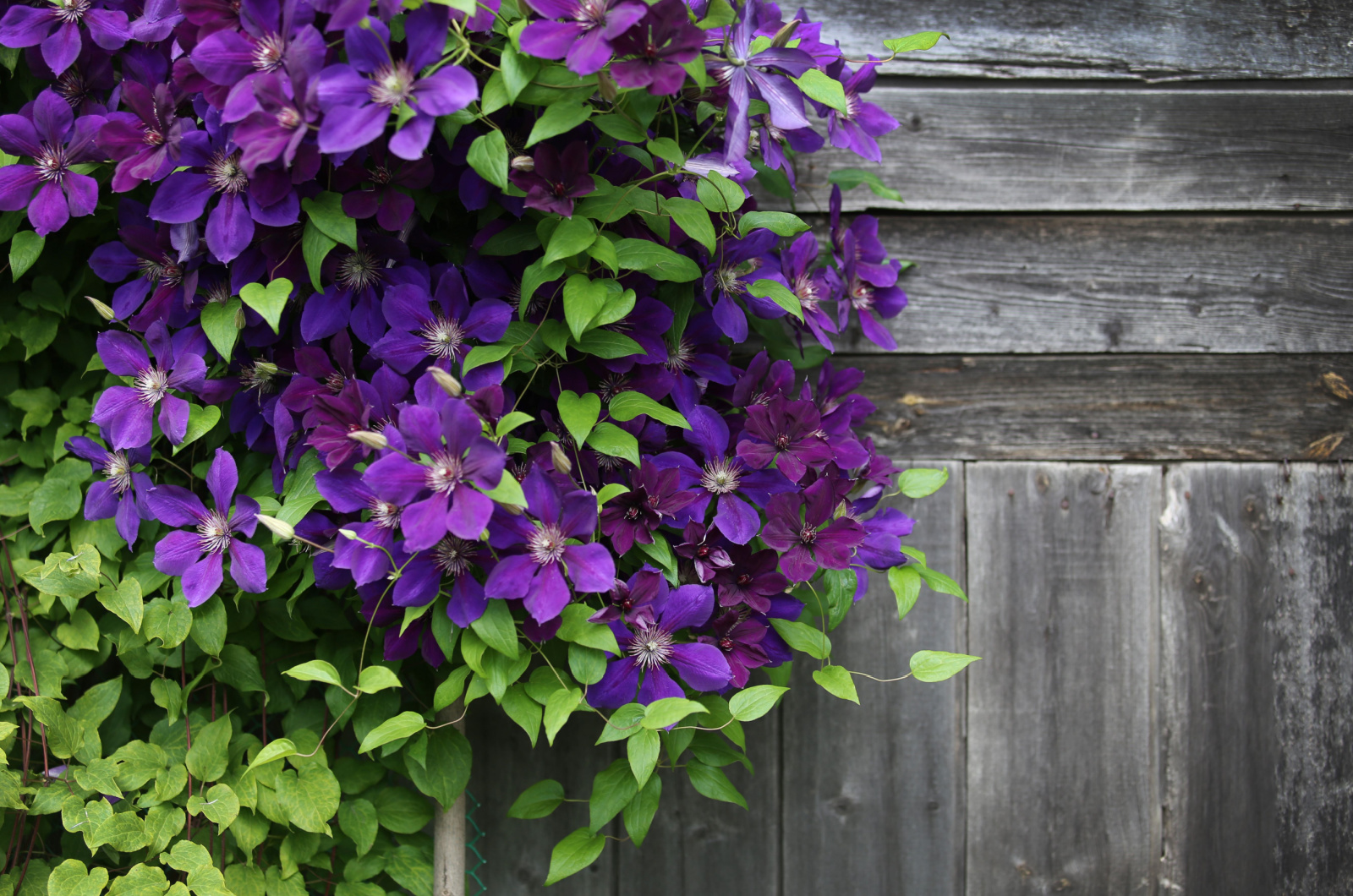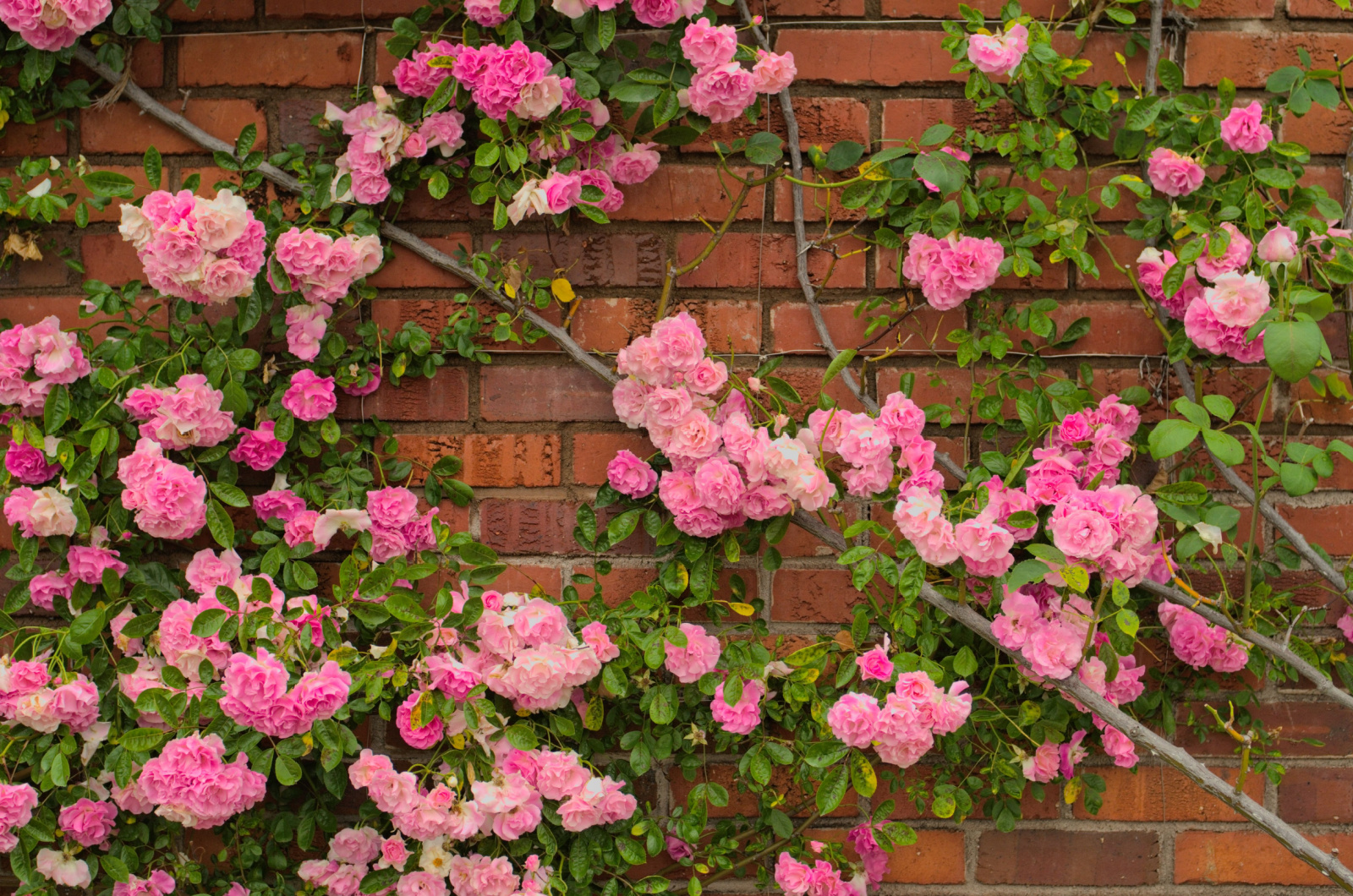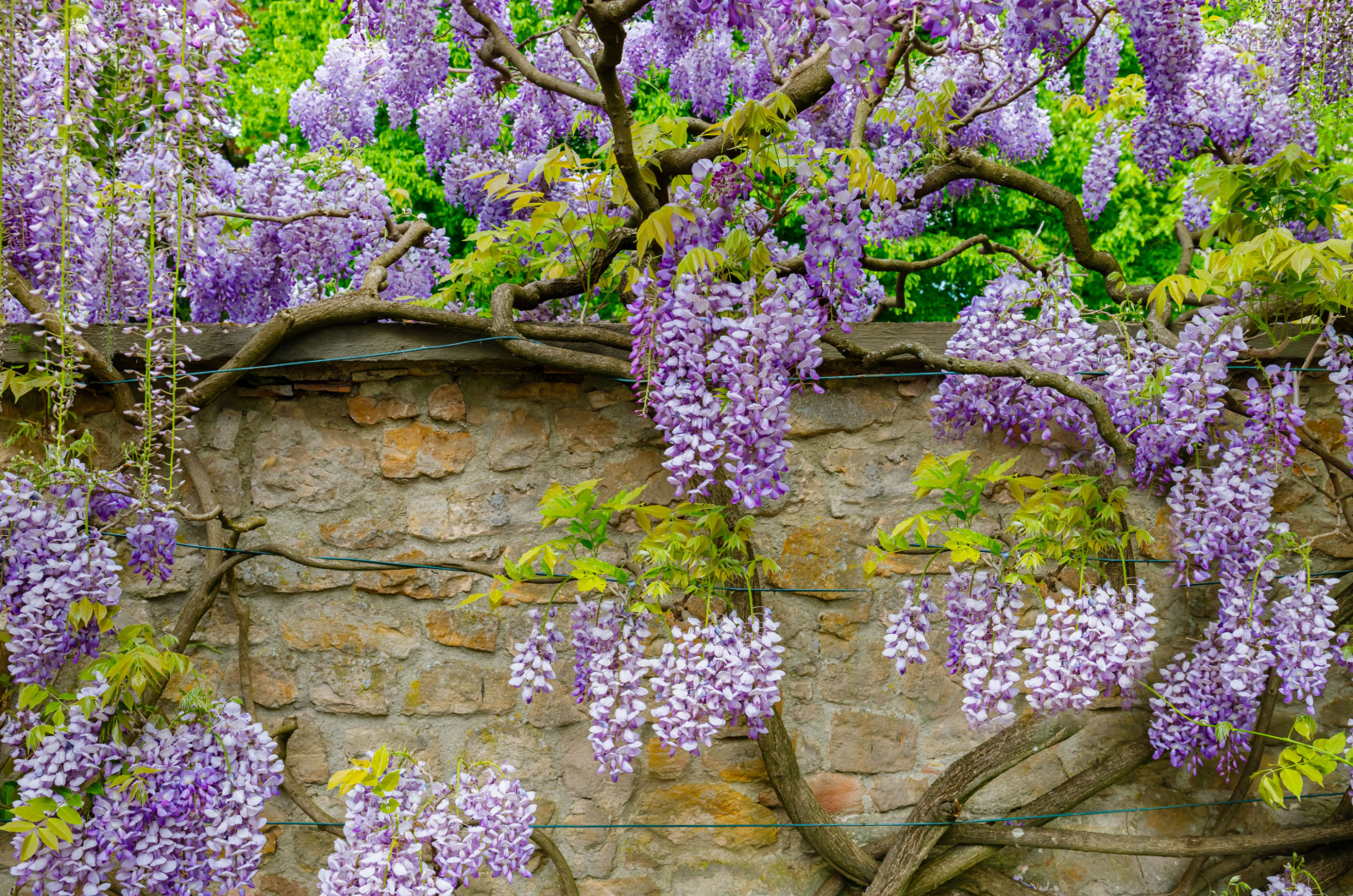Looking for something to cover up some ugly, empty walls? Well, look no further than these gorgeous plants that can climb!
The concept of growing plants on walls, also known as vertical gardening, allows you to maximize your green space, whether you have a spacious backyard or just a small balcony.
In this article, we are going to talk about different plants that grow on walls, and how to take care of them. So, stay tuned!
1. Ivy
Soil requirements: well-draining, fertile
Light requirements: partial to full shade
Water requirements: consistent
We are starting our list with a controversial plant that might not be ideal for growing on walls, but people still regularly use it since it has lush, deep green foliage that provides nice coverage. It’s only when you try to take ivy down that it might damage the wall, otherwise it grows just fine.
Two types of ivy commonly grown on walls include Boston ivy and English ivy. Their leaves are similar, although English ivy grows quicker. However, Boston ivy turns into fierce red and orange during the fall to create a wonderful display.
English ivy is also considered invasive in some areas, so you might have to control its growth. On the other hand, Boston ivy is less aggressive, which is why folks mostly opt for it.
To take good care of your ivy plant, make sure that it grows in partial to full shade. Water it frequently and mist it from time to time as ivy enjoys slightly humid conditions.
2. Trumpet Vine
Soil requirements: well-draining
Light requirements: full sun
Water requirements: consistent moisture
Trumpet Vine, also known as Campsis radicans, is a robust and vigorous vine that produces stunning, trumpet-shaped flowers (hence the name). Its lush green foliage serves as a wonderful backdrop for the fiery red, orange, or yellow flowers that appear in summer.
These flowers are not only visually appealing, but they also attract hummingbirds and butterflies with their nectar-rich blooms. This vining plant is an excellent choice for covering walls, fences, or trellises.
Keep in mind that Trumpet vine requires at least 6 hours of sunlight daily for optimal blooming. Therefore, choose a wall that is in a sunny location. Remember to prune it and control its growth as it can spread and choke other plants nearby.
3. Clematis
Soil requirements: fertile, well-draining
Light requirements: full sun to partial shade
Water requirements: consistent moisture
Clematis is a lovely plant that produces star-shaped blooms from late spring and early fall. To use clematis to cover walls, it’s essential to attach a trellis or some wire in front of the wall so that the plant has something to grab on to.
Growing clematis is quite easy – they can adapt to both full sun and partial shade. Most clematis varieties thrive in moderate temperatures. Some are cold-hardy, while others prefer milder climates.
Pruning requirements vary depending on the clematis group. Some bloom on old wood, while others bloom on new growth. Research the specific variety for pruning guidance.
4. Jasmine
Soil requirements: well-draining, fertile soil
Light requirements: full sun to partial shade
Water requirements: frequent watering
Popular jasmine plants are known for their prominent fragrance and delicate, star-shaped flowers. It is a climbing vine that can gracefully cover walls and trellises. This plant can make your garden exotic and vibrant.
Jasmine plants require between 4 to 6 hours of sunlight throughout the day. These plants enjoy warm temperatures and they are sensitive to cold. Amend the soil with organic matter to improve their growth and blooming.
You might like: How To Grow And Care For Madagascar Jasmine
5. Climbing Roses
Soil requirements: loamy soil that drains well
Light requirements: full sun
Water requirements: consistent moisture
Climbing roses are beloved plants that are prized for their captivating, fragrant flowers and lush foliage. They come in a variety of colors and bloom forms, including single, double, and even climbing hybrid tea roses.
There’s no better option to cover an empty wall than growing roses all over it. Additionally, they are known for their repeat blooming that creates a wonderful floral display.
However, climbing roses need assistance by being trained along wires or trellises because they don’t stick to walls naturally. This involves connecting the stems and branches to an object that will support and promote their growth across the wall.
Keep these roses in a place where they can receive at least 6 hours of direct sunlight during the day. Also provide good air circulation to prevent fungal diseases. Remember to prune these roses when the timing is right!
If you want to meet some more climbing plants, then you should check out: 12 Captivating Climbing Plants For Fences + Care Tips
6. Passion Flower
Soil requirements: well-draining soil
Light requirements: full sun, partial shade
Water requirements: frequent watering
Passion Flower vines are sun-loving plants that are known for their intricate, exotic-looking flowers. These striking flowers come in various colors and are followed by the development of unique, ornamental fruits.
Passion Flower vines are fast growers and can be trained to cover walls, fences, and trellises. Beyond their captivating appearance, passion flowers also have a mild fragrance that attracts pollinators like bees and hummingbirds.
Young plants might need a wire or cane to grow on the wall; however, the mature ones produce self-clinging tendrils so they can support themselves.
Remember to keep them in a sunny place and water them to keep the soil moist. These vines can adapt to different soil types, although they grow best in ones that drain well.
7. Wisteria
Soil requirements: loamy, slightly alkaline to neutral, well-draining
Light requirements: full sun
Water requirements: consistent moisture
Wisteria is a breathtaking climbing plant known for its cascading clusters of pea-like flowers that grow in lavender, blue, and white colors. Due to its vigorous growth, wisteria might not be ideal for small walls. However, they provide extensive coverage perfect for large and tall walls.
Growing wisteria is easy – you just have to make sure that it receives at least 6 hours of direct sunlight and to keep the soil moist, especially during dry spells. Prune wisteria in late winter or early spring to control its size and shape. Regular pruning encourages flowering.





